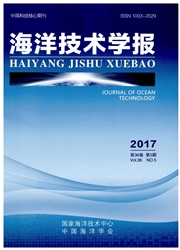

 中文摘要:
中文摘要:
海洋声层析是1979年美国科学家W.Munk等人提出的,通过测量传播时间等声传播信号有关参量反演声波所穿越的海洋特征,得到大面积海域中的海洋动力学状态及其变化的估计。声层析方法自提出以来受到各国的重视。在最初的20 a间,以全球测温计划(ATOC)为代表的一系列验证实验推动了声层析的理论研究、设备研制和应用。步入21世纪后,声层析与海洋动力学的数据同化、利用滑翔机等设备的移动声层析以及沿海声层析得到重视,并进行了相关的理论与实验研究。纳入成像旗下的声层析希尔伯特方法、有效低功耗的分布式传感网络声层析,以及被动声层析,或将成为声层析未来研究的重要方向。
 英文摘要:
英文摘要:
Ocean acoustic tomography(OAT) was proposed in 1979 by American scientist W. Munk and his collaborators. OAT estimates the properties of the ocean, through which acoustic signals propagate, by measuring the propagation time and other acoustic parameters. It soon became an effective method to study the state and variation of oceanic dynamics in large sea areas. OAT gained great attention from 1980-2000, during which a series of verification experiments, particularly with the ATOC project, were conducted to promote theoretical research, equipment building and applications. After entering the 21 stcentury, further research of theory and experiment has been made with regard to acoustic tomography as a data assimilation means with ocean dynamics,moving tomography with gliders and moving horizontal array as mobile nodes, as well as the coastal acoustic tomography. The open questions of OAT include:(1) the Hilbert method of OAT in a unified imaging framework,(2) effective and economical acoustic tomography with distributed sensor network,(3) passive acoustic tomography.
 同期刊论文项目
同期刊论文项目
 同项目期刊论文
同项目期刊论文
 期刊信息
期刊信息
